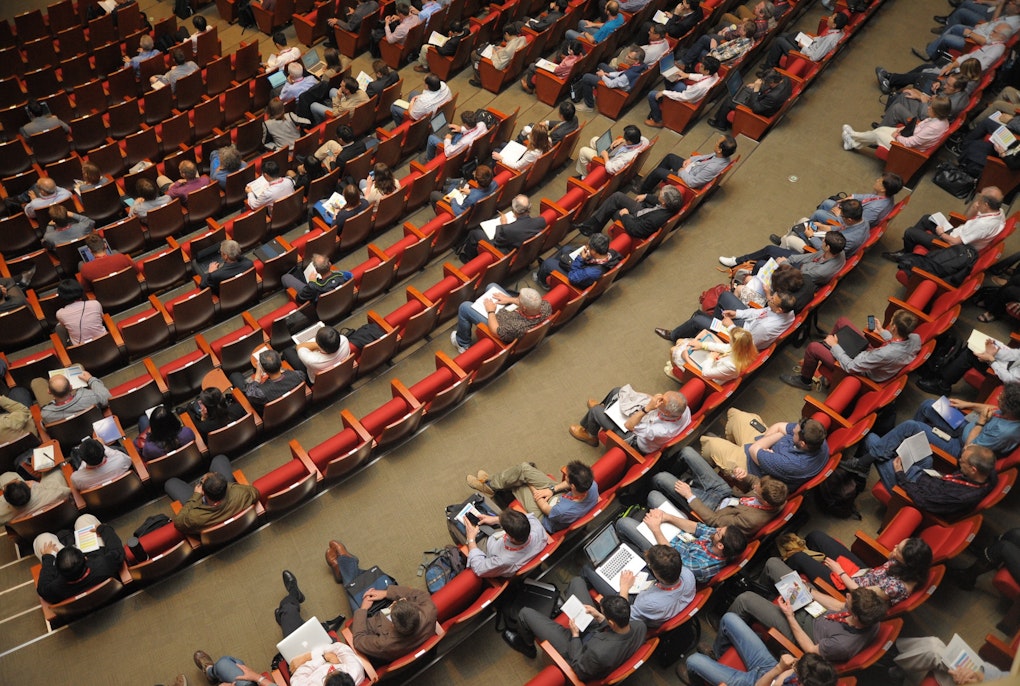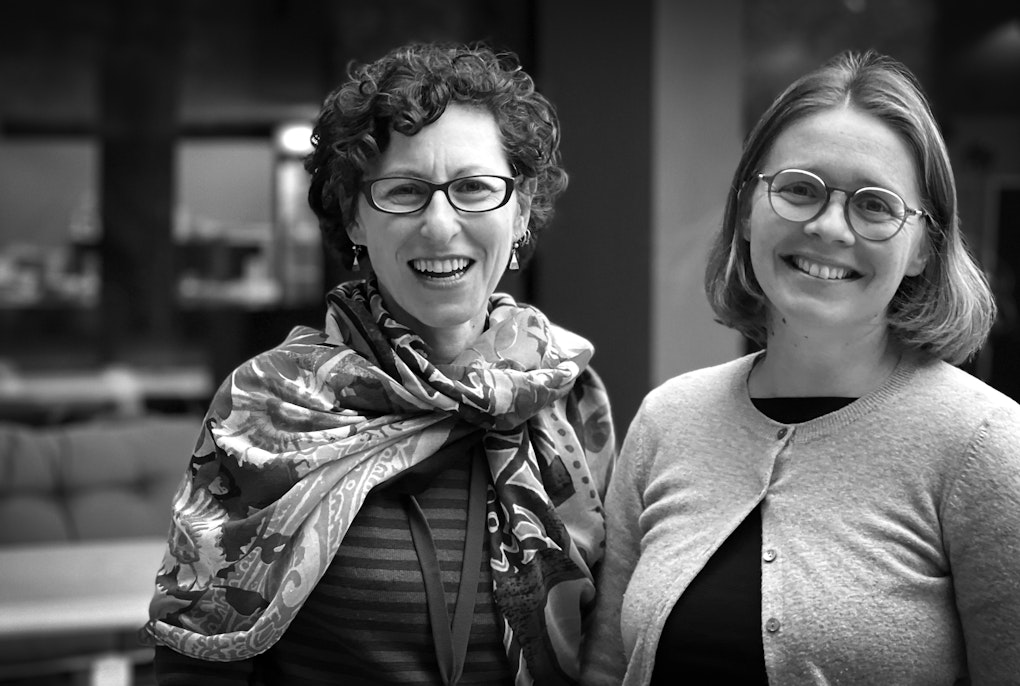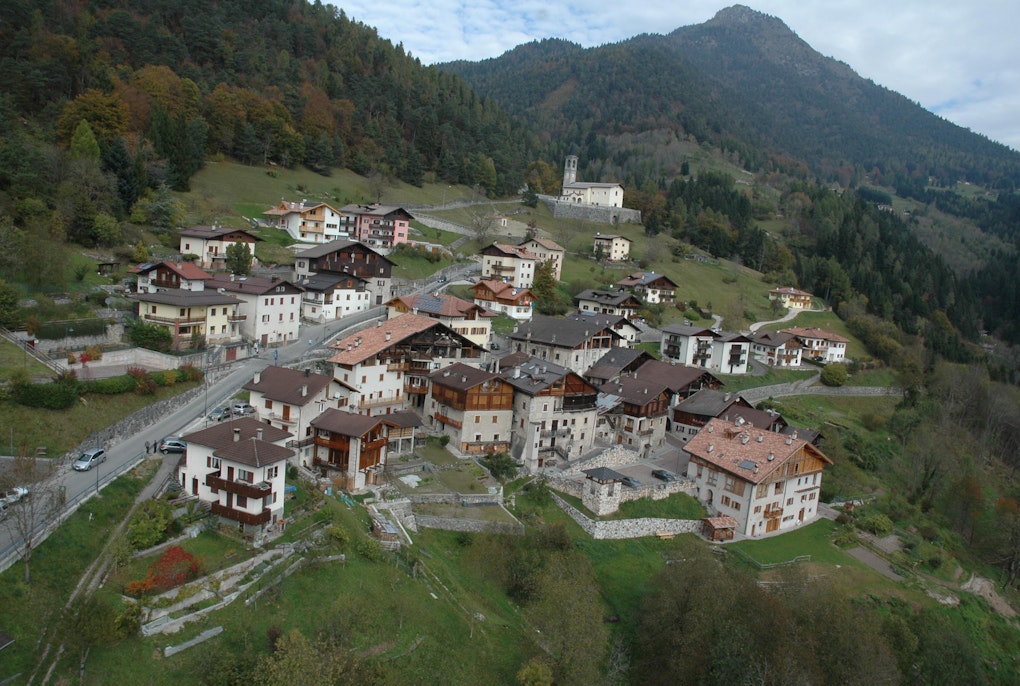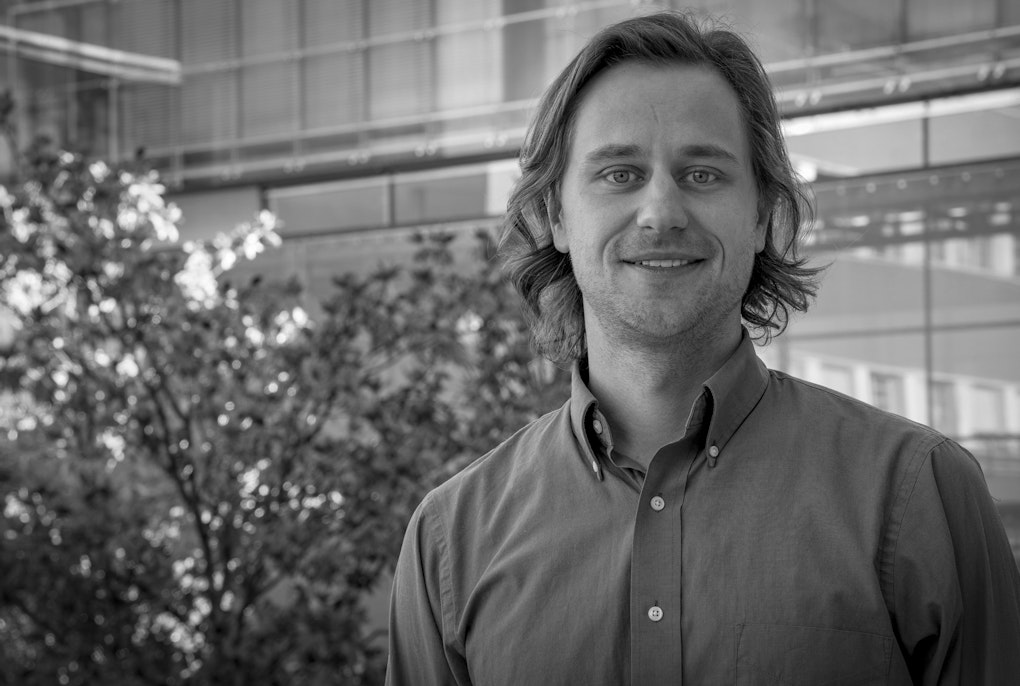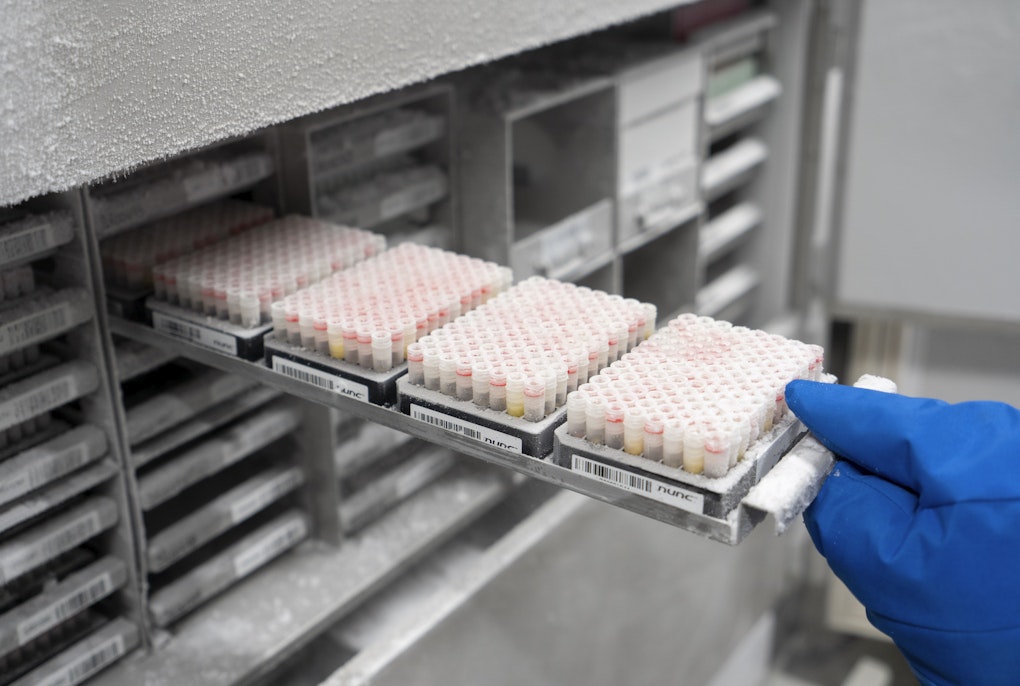magazine_ Interview
"The most direct route is rarely feasible"
Conversations between disciplines: interview with ecologist Ulrike Tappeiner and emergency physician Hermann Brugger.
Mountains unite them: Ecologist Ulrike Tappeiner has been studying alpine ecosystems for four decades and keeps records on climate change and biodiversity. Emergency Physician Hermann Brugger researches the effects of altitude on the human body. Both work with huge data sets, from which they extract answers to scientific questions from months, often years of work. It's time-consuming, but it's the only way to gradually gain a better understanding of our complex world.
How do people and mountains infuence each other?
Ulrike Tappeiner: If I look at it in terms of geological history, over a very long period of time, in the past humans had relatively little to do with the mountains. However, they had already settled in the Alps in the Bronze Age were using areas above and around the timberline for pasture farming. When I look at the last decades, climate change clearly shows us how humans influence not only the mountains, but the whole planet. It should be noted that one fifth of the Earth’s surface is mountainous, and climate change has a particularly strong impact in the mountains.
Climate change has created an indirect human influence on the mountains. What about the direct influence?
Tappeiner: Of course, humans use the mountains intensively. Let's just think of tourism in the Alps, or forest decline and degradation in many of the world's mountains systems, such as in the Caucasus or the Karakoram. But seen globally, from the Andes to the Hindukush, this direct influence is only significant in some parts of the mountains, the indirect influence via climate change, on the other hand, has an effect right down to the very last mountain ranges. A classic example is the disappearance of glaciers and the associated changes in the water balance. More than half of humanity depends on water from the mountains. Due to global warming, mountains are also refuges for plants, animals and, increasingly, humans. When the temperature rises, it becomes drier leading to crop failures and increasing incidences of disease-carrying insects in valley areas. This, too, can cause people to retreat to the mountains.
In the course of your research career, have you personally noticed changes due to climate change that have surprised you with the speed in which they occurred?
Tappeiner: Certainly. Most alarming is the glacier recession. Since my youth I have been vacationing in the Laas-Lasa Valley in South Tyrol almost every year. And I still remember the fantastic hanging glacier and how the blue ice shone through. Today it no longer exists. 40 years ago, no one was aware that the glacier's retreat was the first sign of climate change.
Mr. Brugger, as an emergency physician and altitude medicine researcher, you deal with people who venture far above the tree line - how do the mountains affect them?
Hermann Brugger: The relationship between us and the mountains have many facets and is constantly changing. Until about 200 years ago, the mountains were seen as something threatening. They were the source of landslides, avalanches, and floods. And there were also many myths about them, even our very own Dolomites are shrouded in legends. The mountains became an alpine destination only in the nineteenth century, when British mountaineers were the first to climb the peaks of the Alps. The First World War was fought in the Alps as a fierce battle for strategically important peaks - this has left its mark on our language: today, mountains are still conquered, and peaks stormed. Since the 1970s, the mountains have provided the arena for mass sports. The mountain has not changed, we have. Mountains are still threatening, but today we are better equipped. We have adapted to the mountain.
But altitude has certain effects on our organism - how did you, as a young physician, come to the decision to research this?
Brugger: I have always been active in the mountains, so it was only logical that after my training as an emergency physician, I also became a mountain rescue physician. Early on I quickly noticed that there was hardly any evidence-based data for alpine emergency medicine. It was all based on anecdotes at that time. That’s when I started to systematically collect and analyze data, at that time there was none in South Tyrol, so I knocked on the doors of my Swiss colleagues.
You once even told us about an experiment in which you buried yourself in the snow to see what would happen if you only had a tiny breathing cavity.
Brugger: That was on the Stubai Glacier, with my colleague Günther Sumann. At that time the common opinion among anesthesiologists was that a buried victim would suffocate after five minutes if their brain was not supplied with oxygen. However, data and reports from Swiss mountain rescue indicated a longer survival phase - up to an incredible 18 minutes. I suspected that the weather conditions, temperature, and the type of snow played a decisive role. However, I lacked the evidence base, so I got buried. Looking back, I see how crazy that was.
Ms. Tappeiner, how did your research questions come along?
Tappeiner: Not through such brutal self-experimentation (laughs). But in my early research days I also dealt with the topic of snow, more precisely with ski slope ecology. At that time, my dissertation was about the question of how leveled ski slopes differ in their ecological effects from pristine alpine meadows. The study was undertaken at a ski resort in the Gastein Valley in Austria. There we discovered that the CO2 concentration at the bottom of groomed slopes is higher because the air is pressed out when the snow is groomed. The CEO of the Arlberg cable cars at the time said ironically: "They would have known that long ago because the snow mice always walk around with gas masks.” You hear things like that when you descend from the heights of basic research to applied science, but that's exactly what fascinates me about my work.
How did you collect data back then? In contrast to alpine emergency medicine, ecology was already an established discipline.
Tappeiner: Data existed but collecting and even more so storing it was laborious. At the beginning of the 1980s, there were no data loggers; you had to build everything yourself. I soldered my own. My professor at the time was an experimental physicist and used small calculators to store data. Like a cash register, they printed out the data on a roll. I then transferred the data from an entire summer on the microclimate - temperature, radiation conditions, humidity and others - and the self-programmed evaluations onto punch cards and handed them over to the operators of our large-scale computing system at the University of Innsbruck; back then they were our gods in white, the guardians of our data. A few days later, I could pick up the evaluation - provided I hadn't made a programming error.
Do you still have these old data tapes?
Tappeiner: Yes, in my office closet. Some of them are no longer legible, others are. I've decided that when I retire, I'm going to make them available to the worldwide scientific community as open data. It would be fantastic data, because you would have long series that could provide more information, for example, about the exchange of CO2 between ecosystems and the atmosphere.
There have been major advances not only in the collection and storage of data but also in terms of sharing research data.
Tappeiner: Absolutely. Anyone who publishes in a reputable journal today has to cite the source of their data and make it accessible. In many cases, such data sets are also made available as open data. This is what we have been doing for years with the data from our long-term ecological study in the Matsch-Mazia Valley and now also from the South Tyrol Biodiversity Monitoring initiative.
"That, after all, is the very essence of science: hypotheses are generated, some consolidated, others revised."
Ulrike Tappeiner
Considering the acute crises of climate change and biodiversity loss, can the huge amount of available data at least help us to better understand relationships and patterns?
Tappeiner: That would be nice. But we still know far too little. The large-scale climate change models are very difficult because chaotic and highly complex systems interact, from ecology to economy, politics, and society. Even if we only forecast the models based on greenhouse gas emissions, we still have to revise them again and again. That, after all, is the very essence of science: hypotheses are generated, some consolidated, others revised. Our world is enormously complex as are ecosystems and climate and so is the human factor. These levels of complexity will never be accommodated by a computer, not even with the help of AI. That’s why we work with simplified models that nevertheless allow us to make accurate statements about what we are facing.
"In the terraXcube we already disproved a textbook opinion with a first study. The theory being that humans produce more urine at altitude."
Hermann Brugger
What about evidence-based data in emergency medicine?
Brugger: The problems are similarly complex. There are an infinite number of variables in the human organism and the external parameters that influence it, such as temperature or altitude. In addition, we humans are all physiologically different. That's why we have to reckon with an enormous scatter when collecting data. For a long time, it was not possible to pick out individual parameters and see exactly what the cold alone does to people? Or even what altitude does? We hope to find answers to these questions with terraXcube - our new extreme climate simulator, which makes it possible to switch individual parameters on and off. We have already had our first small "eureka" moment: for the first time, we were able to isolate the influence of pressure in the atmosphere on the human organism in the terraXcube and already disproved a textbook opinion with a first study. The theory being that humans produce more urine at altitude. In the simulator, we saw that the greater amount of fluid excreted was related to plasma change in the blood and not with the kidneys.
Ms. Tappeiner, was there a moment in your research career that threw previous paradigms overboard?
Tappeiner: I didn't really have a classic eureka moment, but I have had some surprising insights. For example, in my early study on artificial snow, and how it influences the vegetation. Studies on Monte Bondone have shown that plants are very adaptable, even if the snow on a ski slope doesn't melt until later, the natural vegetation manages to complete its phenology - its seasonal development - in a shorter time. In the past, it was thought that the vegetation was strongly influenced by artificial snow which stays on the slopes for longer than natural snow.
Now, not only has the scientific data in your disciplines skyrocketed, but so have scientific publications, does that make your work easier?
Tappeiner: Absolutely. I used to wait a month for a copy of a scientific article, but now I log in and get everything immediately. However, the flood of information to which we researchers are also increasingly exposed often has an impact on the quality of those publications.
Brugger: Research has changed radically. Today, we collaborate across borders. In my early days, there was the telephone or a conference to exchange ideas internationally. Today, the production process of publications runs at the speed of light. And even in my small field, I don't manage to stay one hundred percent up to date.
What tips would you both give to young research colleagues today?
Tappeiner: The same thing I told myself back then - never give up and trust in yourself. That is enormously important, and we women have a harder time with that. The glass ceiling also exists in research. But first and foremost, your research has to excite you, because it doesn't make you rich, or at least it rarely does. And then you need a little bit of chance and luck. Unfortunately, you can't influence that.
Brugger: I would like to pass on to the younger generation this feeling of breaking new ground with scientific results and helping to "improve the world," even if it is only with a minimal contribution. In order to transform scientific hypothesis into a tangible result a good portion of tenacity is required. Often, an investigation yields a negative or completely different result than expected, forcing us to be humble. But to achieve a research goal, one must also be prepared to accept failure and make detours. It's like climbing: the most direct route is rarely feasible.
Ulrike Tappeiner
Ecologist Ulrike Tappeiner is head of the Institute for Alpine Environment at Eurac Research and has been since 1995. Since 2005, she has been a university professor for ecosystem research and landscape ecology at the University of Innsbruck. From 2012 to 2018, she was the Dean of the Faculty of Biology at the University of Innsbruck. She has also been president of the Free University of Bozen-Bolzano since 2018. In her free time, she is drawn to the mountains. Her favorite tour to this day is the Wild Water Trail in the Stubai Valley. Being out and about there, she realizes time again why the fight against climate change is her heartfelt topic.
Hermann Brugger
Emergency physician Hermann Brugger established the Institute for Alpine Emergency Medicine at Eurac Research and directed it from 2009 to 2022. Since 2006, he has been a private lecturer and adjunct professor at Innsbruck Medical University. From 2016-2021 he was President of the International Society of Mountain Medicine ISMM. He is also an avid mountaineer and ski-tourer who has completed numerous ascents in Europe, America and Asia. When weather and work permit, the native of Brunico/Bruneck straps on his touring skis and is out on the mountains in the Puster Valley. Today, it's more of a pleasure tour; in the past, it was more of a thrill.




